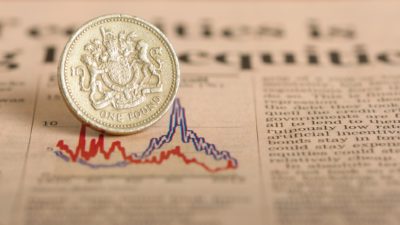Vodafone Group (LSE: VOD) (NASDAQ: VOD.US) has recently undergone a massive transformation, selling its 45% stake in US mobile operator Verizon Wireless for $130bn to Verizon Communications.
As a Vodafone shareholder, I’m keen to understand more about what’s left of Vodafone, and to see how strong its dividend might be if revenues from the firm’s main European markets continue to decline.
I’ve chosen three financial ratios commonly used by credit rating agencies to help me gauge the strength of Vodafone’s finances — and its dividend.
1. Operating profit/interest
Ratings agencies normally use Earnings Before Interest and Tax (EBIT), instead of operating profit, but the two are normally very similar, and operating profit is easier for us to find, as it’s always included in company results.
What we’re looking for here is a ratio of at least 1.5, to show that Vodafone’s earnings cover its interest payments with room to spare:
£10,139m / £1,637m = 6.2 times cover
Interest cover of 6.2 times should mean that Vodafone can comfortably maintain its dividend payment, even if earnings from its core European businesses continue to fall.
2. Debt/equity ratio
Commonly referred to as gearing, this is simply the ratio of debt to shareholder equity, or book value (total assets – total liabilities). I tend to use net debt, as companies often maintain large cash balances that can be used to reduce debt if necessary.
Acceptable levels of gearing vary, but as a rule of thumb, less than 50% is pretty safe, while more than 100% is a definite risk. Between 50% and 100% is a grey area, where other factors, such as profitability and growth, need to be considered.
Vodafone repaid $5.65bn of debt following the Verizon Wireless transaction, giving it net debts of approximately $23bn. Vodafone’s most recent reported equity is $84bn, giving net gearing of 28%.
These figures will change when Vodafone publishes its first set of figures after the Verizon Wireless sale, but I’m fairly sure that this will cause Vodafone’s gearing to fall further, as the firm retained approximately $35bn of the $130bn it received from Verizon Wireless, in order to fund acquisitions, debt reduction and capex.
3. Operating profit/sales
This ratio is usually known as operating margin, and is useful measure of a company’s profitability.
Vodafone’s 22% operating margin is very healthy, and again suggests that the firm should comfortably be able to maintain its dividend.








